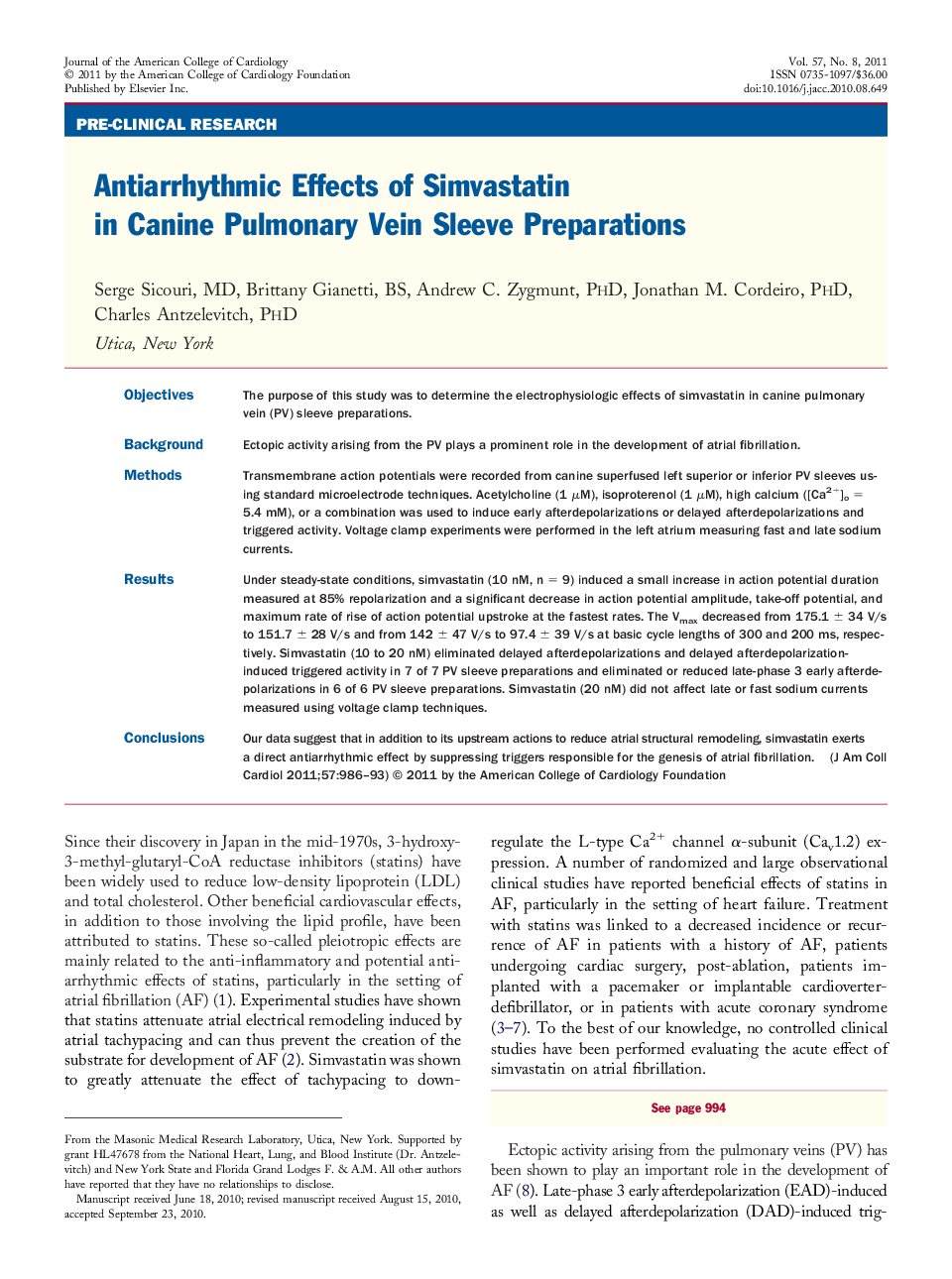| Article ID | Journal | Published Year | Pages | File Type |
|---|---|---|---|---|
| 2948641 | Journal of the American College of Cardiology | 2011 | 8 Pages |
ObjectivesThe purpose of this study was to determine the electrophysiologic effects of simvastatin in canine pulmonary vein (PV) sleeve preparations.BackgroundEctopic activity arising from the PV plays a prominent role in the development of atrial fibrillation.MethodsTransmembrane action potentials were recorded from canine superfused left superior or inferior PV sleeves using standard microelectrode techniques. Acetylcholine (1 μM), isoproterenol (1 μM), high calcium ([Ca2+]o = 5.4 mM), or a combination was used to induce early afterdepolarizations or delayed afterdepolarizations and triggered activity. Voltage clamp experiments were performed in the left atrium measuring fast and late sodium currents.ResultsUnder steady-state conditions, simvastatin (10 nM, n = 9) induced a small increase in action potential duration measured at 85% repolarization and a significant decrease in action potential amplitude, take-off potential, and maximum rate of rise of action potential upstroke at the fastest rates. The Vmax decreased from 175.1 ± 34 V/s to 151.7 ± 28 V/s and from 142 ± 47 V/s to 97.4 ± 39 V/s at basic cycle lengths of 300 and 200 ms, respectively. Simvastatin (10 to 20 nM) eliminated delayed afterdepolarizations and delayed afterdepolarization-induced triggered activity in 7 of 7 PV sleeve preparations and eliminated or reduced late-phase 3 early afterdepolarizations in 6 of 6 PV sleeve preparations. Simvastatin (20 nM) did not affect late or fast sodium currents measured using voltage clamp techniques.ConclusionsOur data suggest that in addition to its upstream actions to reduce atrial structural remodeling, simvastatin exerts a direct antiarrhythmic effect by suppressing triggers responsible for the genesis of atrial fibrillation.
